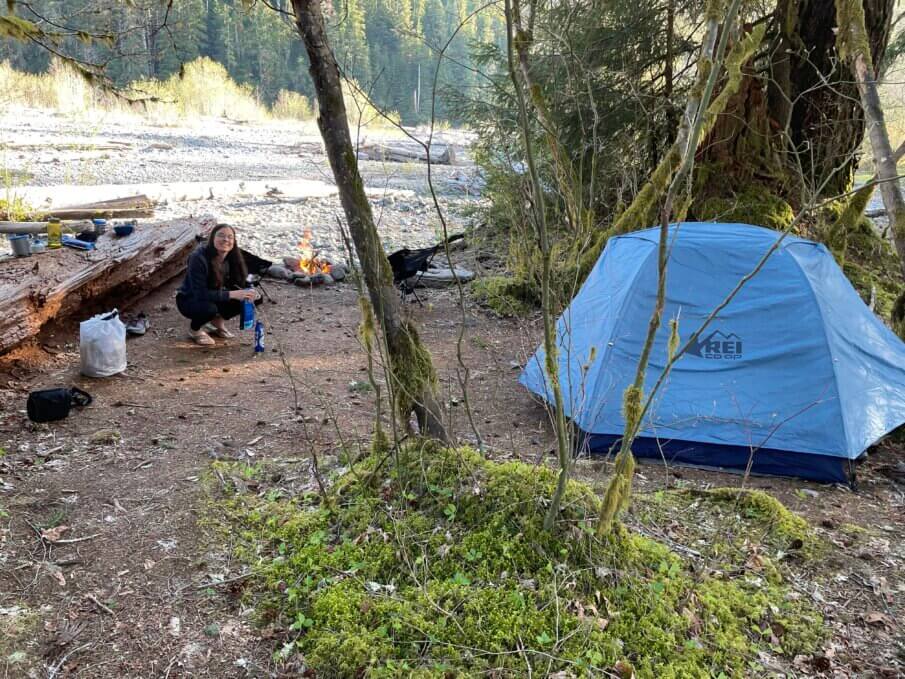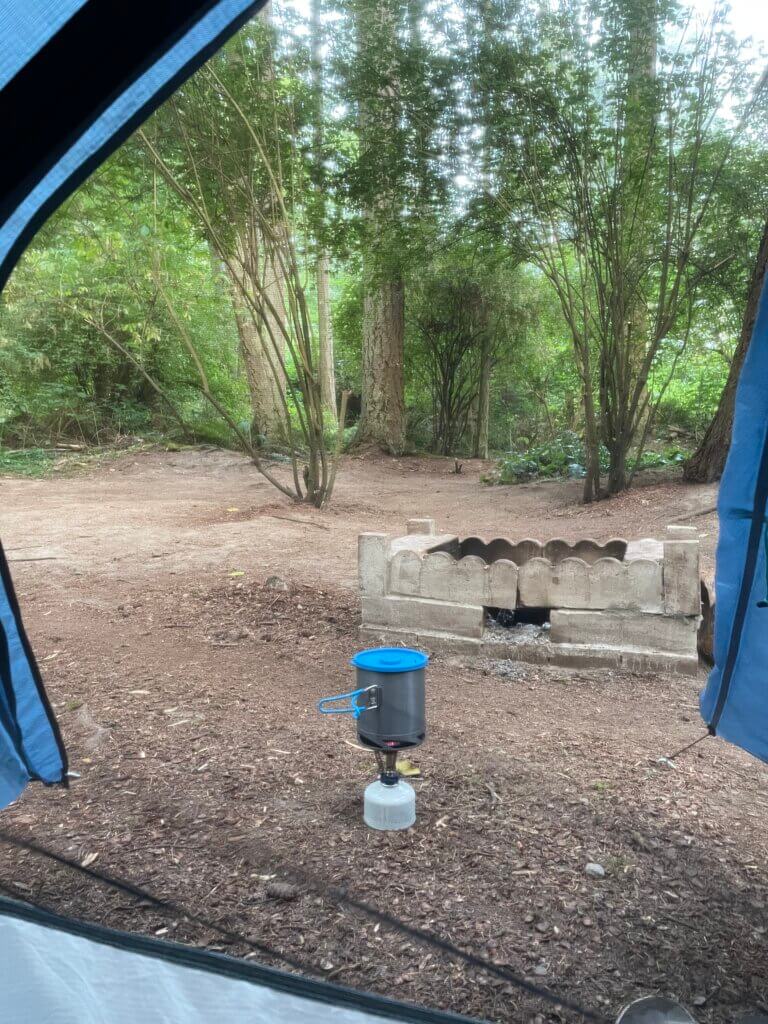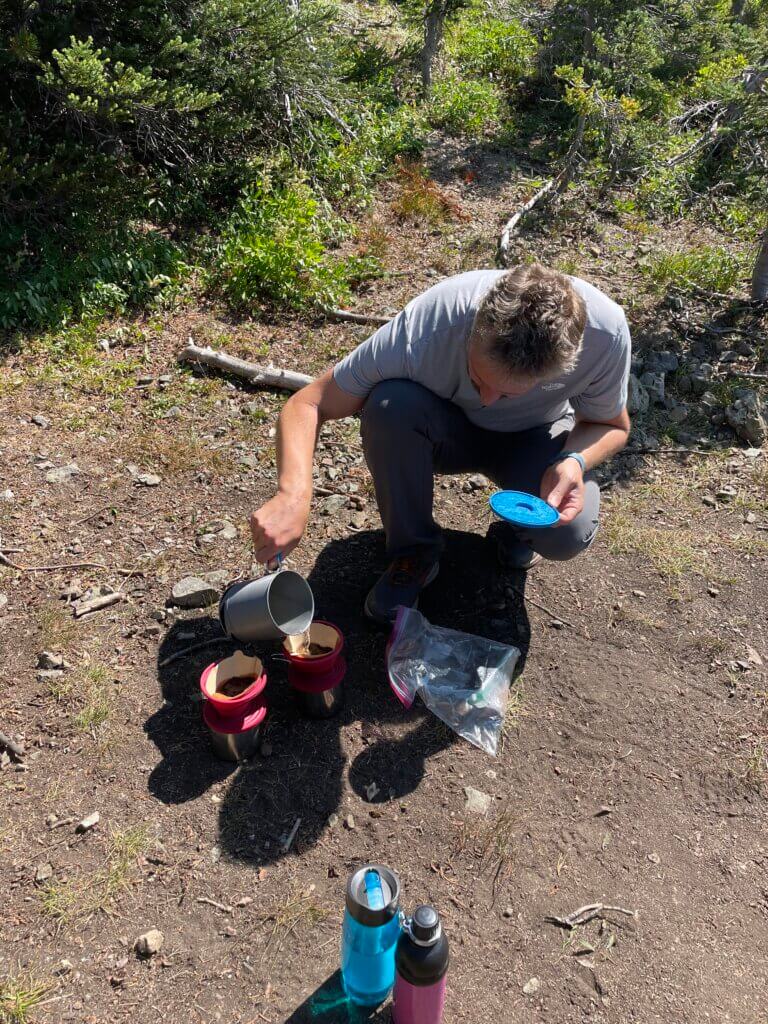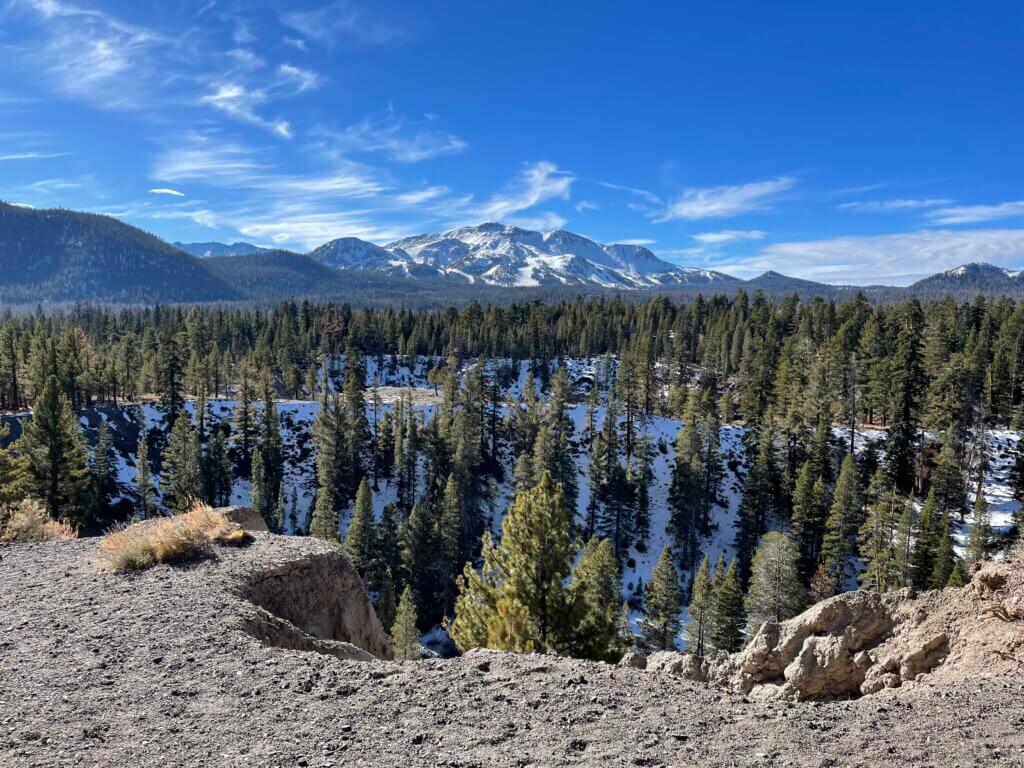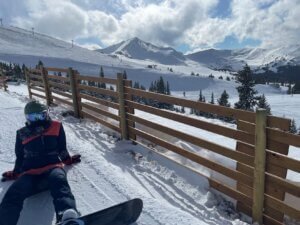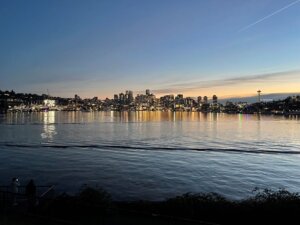*This post contains affiliate links, if you click a link I make a small commission and you help support the blog
Whether you are heading out on a day hike in Olympic National Park or hiking the Pacific Crest Trail, knowing how to properly fuel your body is one of the biggest challenges. If this is your first time getting out for a couple of days of hiking, trying to figure out what is easy, calorie dense, and lightweight can be daunting.
Many hikers are now looking for better ways to get fuel than the typical ramen and snickers bars. They want to make healthier choices while on trail to keep up their typically healthy lifestyles. And for those with certain food sensitivities, this is even more important.
This post will help break down some easy ways to get the nutrition you need on trail through stoveless backpacking meals.
A word on warm meals from a stove
There is truly nothing like having a hot meal after a long hike and the easiest way to get there is through dehydrated meals. The options have really grown in leaps and bounds in the past 5-10 years. There are now options for those with gluten and dairy sensitivities and vegans. The most popular, and budget friendly, of course, is the mountain house meals.
After a long day on the trail, if you have your stove with you, it’s easy to just add hot water to the bag. Then all you need is a fork (though I prefer my spork).
There’s also nothing like a hot cup of coffee on the trail, whether you use instant or pour over (my preference), so having the flexibility of a stove can really take things up a notch. But the savings on weight from making sure to carry enough fuel may outweigh the need for a hot meal.
So, what if you don’t want the extra pack weight from the fuel you need to carry for your stove? What if you want to get the nutrition you need from cold food? Or maybe you were planning to cook over the fire or on your stove your whole trip but there’s fire bans and stove bans. What are your options?
Cold soaking
The easiest method is through cold soaking. What does this mean? A slower process than cooking your food in hot water, cold soaking allows food to rehydrate for eating by adding cold water and allowing it to sit for several hours. For example, you would assemble your lunch during breakfast and your dinner during lunch to make sure there is enough time for the food to rehydrate and be eaten.
One of the things to watch for, especially with a freeze-dried meal is if the food was precooked prior to freeze drying. If it was not, rehydrating with cold water is not going to be enough. It needs to be followed up with cooking.
If you purchase meals that have been precooked prior to freeze-drying, rehydrating with cold water is fine and the food will be safe to consume. The exception to this is freeze-dried fruit and dehydrated vegetables. Both are great, lightweight options for additions to meals.
Other good candidates for cold soaking include instant rice, oats, and dry ingredients such as dried vegetables and meats (or meat substitutes). You can easily combine ingredients to create unique and delicious cold soak recipes, like a taco soup or rice bowl with spices, meats and veggies of your choice. Having a backpacking meal plan ahead of time will help ensure you have enough of each ingredient to create full meals during your hike, or at least until your next resupply boxes.
Easy snacks
We all know that trail mix and energy bars are a big snack choice among hikers. They have a lot of good calories and fats in a small package. These are still a good option and your local grocery stores should have all these extras you could need or want.
If you really want to treat yourself with fresh foods, make sure they are consumed early in the trek so they don’t take up space and just go bad. There are some great containers for things like bananas so they don’t get squished in your bear canister.
And always practice leave no trace, do not leave your banana and orange peels assuming they will just biodegrade. This takes longer than you think and it is unnatural for them to be in that particular environment, attracting the attention of wildlife and creating habituation and negative encounters.
Whatever your personal preferences, going stoveless is an easier adjustment than people consider and having pre-made dehydrated meals or easy rice meals as a starting point is a great way to dip your toes into the cold-soaking meal world.
From there you can start experimenting with ingredients (do this at home, before hand, to make sure they aren’t terrible and that’s all you have to eat for the whole trip) and even prepare dehydrated meals of your own with a home dehydrator. With practice you may just become a backcountry foodie and create meals that others will be inspired by (or envious of).
Pro tips
- Make sure to use filtered water (I know this will be a no-brainer for many or most but if you are new to these things it can be an easy mistake)
- Keep it simple (oats, protein powder and dehydrated fruit make an excellent breakfast)
- Have a plan – how many meals will you need? Are there resupply stores along the route? How much of each ingredient do you need per meal?
- Purchase ingredients in bulk if possible to save on waste (less plastic and packaging that will end up in the landfills)
- Choose higher calorie, nutrient dense foods to decrease the amounts of things you will need to get the same caloric intake (the less you have to bring, the lighter your pack and the easier it is to fit in a bear canister)
- Always bring a treat (keeps up your morale and keeps things from being an endless array of rice and oats)
- Personally dehydrated fruits are delicious but take 10-12 hours to prepare
- Stoves fail, we run out of fuel with unanticipated hiking delays, fire and stove bans happen, always have a backup plan
Concluding Thoughts
Whatever your cooking system is, there is always a chance for failure. There is always a chance that there will be a stove ban due to wildfires, particularly with the constant issues of climate change we are facing. It is good to have a backup. We all love a warm meal but I can say from experience, that nothing is better than having a meal (hot or cold) in a beautiful spot in nature.
Which stoveless meal will you try first? Share your favorite recipes in the comments below.
